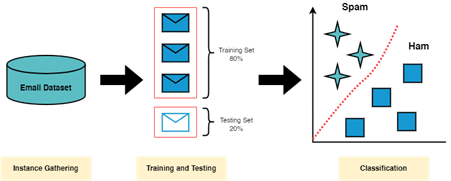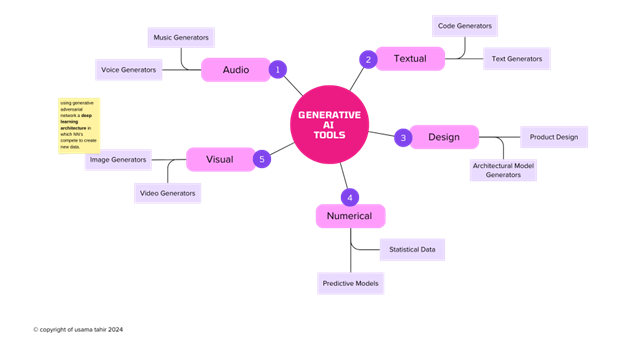Embracing generative AI: A comprehensive guide for professionals

What exactly is Generative AI, and why is it becoming such a buzzword in the professional world? In this guide, we'll explore the fundamentals of Generative AI, delve into how it stands apart from traditional AI, and examine the impact of Generative AI models in real-world applications (RWA).
Traditional AI vs Generative AI
Understanding Traditional AI
Traditional AI, often referred to as discriminative AI, focuses primarily on recognizing patterns or making predictions based on input data. These systems apply algorithms and predefined rules to analyze data, classify it, and make decisions within set boundaries. They are particularly effective in applications where the task is to identify the correct category or response from a given set of possibilities, such as spam detection or image recognition.

Exploring Generative AI
In contrast, generative AI aims not just to interpret data but to create new content from it. Utilizing advanced neural network architectures like Generative Adversarial Networks (GANs) or Variational Autoencoders (VAEs), generative AI models learn the underlying data distribution of their training inputs and can generate novel data instances that are similar to but distinct from the original data. This capability makes generative AI especially powerful in fields like content creation, where it can produce forms of media that did not previously exist.
Refer to the image below to explore a wide range of generative models capable of creating various types of data.

Ultimately, while traditional AI works within the confines of existing data and classifications, generative AI extends these boundaries, offering the potential to innovate and create, thereby transforming how machines interact with the world and contribute to creative processes.
Want to know how generative AI is making our daily tasks easier? From offering assistance to serving as a complete alternative, let's explore its impacts in the sections below.
Impact of Generative AI models in RWA
With the current advancements in AI, generative models can achieve incredible feats. Let’s explore.
Content Creation (Text to Text):
Generative AI automates article and marketing content creation, reducing task time by 40%, allowing for more strategic planning and creativity.
Design and Art (Text/Image to Image):
Generative AI enables artists to create unique visual art and designs, increasing innovative concepts by 75%.
Software Development (Text to Code):
Generative AI improves software development by generating code, enhancing testing, and suggesting solutions, leading to 30% more defect identification and faster cycles.
Language Translation (Text to Text/Audio):
Generative AI translates text and speech in real-time with 95% accuracy, enabling seamless multilingual communication and global collaboration.
Healthcare (Image/Text to Image/Diagnosis):
Generative AI aids in medical image analysis and diagnosis, improving detection accuracy by 20% for more precise and timely diagnosis.
Gaming (Text/Image to In-game Content):
Generative AI creates dynamic game content and adapts gameplay, boosting player engagement and satisfaction by 50%.
Finance (Text/Image to Predictive Models):
Generative AI analyzes market trends and predicts stock movements with 85% accuracy, increasing trading profitability by 25%.
_______
Generative AI is revolutionizing industries with its impressive capabilities. Behind the scenes, there's a complex and sophisticated technology stack.
Curious about how it all works?
Check out our next blog, where we break down the six-layer architecture that powers these advancements and enables such diverse and powerful results.
Author:
Usama Tahir, Full Stack Developer, Epical
